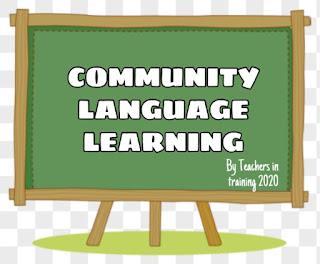TASK BASED LANGUAGE LEARNING
TASK BASED LANGUAGE LEARNING
Task-based Learning (TBL) is an approach that has roots in the Communicative Language Teaching method, where the teaching process is done entirely through communicative tasks. In order to fully acquire language, it must have real meaning by being used in natural contexts. With Task-based Learning, teachers ask students to complete purposeful tasks that elicit the use of the target language. Assessment centers around the general outcome of the task, rather than meticulously picking apart each element of speech. In doing this, you celebrate the successful, appropriate completion of a task, which in turn boosts student confidence immensely.ased Language Learning.
The first principle, scaffolding, claims that the chosen lessons and materials have to ensure that learning can take place. Thus, the learners have to be provided the language they need in order to complete the task (Nunan 2007: 35). Second, task dependency states that each task has to be connected with the one before as this sequence has to tell a “pedagogical story” (Nunan 2007: 35). The third principle corresponds to the students’ recycling of language by which language learning is optimally facilitated. By means of such a recycling, the learners can experience how the target language items function in closely related contexts and in completely different ones (Nunan 2007: 36). The fourth principle, active learning, focuses on the premise “learning by doing”. As language learning is best guaranteed if the target language is actively used, the teacher should play a more passive role as far as possible (Nunan 2007: 36f.). Fifth, task-based language teaching has to ensure that linguistic form, communicative function and semantic meaning are integrated into the learning process. Thereby, the learners are able to recognize the relationship between function and form and meaning (Nunan 2007: 37). The sixth principle, reproduction to creation, demands that creative language use develops from reproduction of language models. That means, the students first reproduce the language provided by the teacher, a tape or a text and as a next step, they are capable of using similar language items more creatively (Nunan 2007: 37). As the last principle, Nunan mentions the reflective element, namely that “[l]earners should be given opportunities to reflect on what they have learned and how well they are doing.” (Nunan 2007: 37).
Characteristics
• Students are encouraged to use language creatively and spontaneously through tasks and problem solving
• Students focus on a relationship that is comparable to real world activities
• The conveyance of some sort of meaning is central to this method
• Assessment is primarily based on task outcome
• There is no acquisition of new grammar or vocabulary features
• Everything is left to the teacher.
• Not all students are or will be motivated by TBLT.
• Some students need more guidance and will not or cannot “notice” language forms (grammar) or other elements of accuracy.
• Students typically translate and use a lot of their L1 rather than the target language in completing the tasks.
TECHNIQUES OF TBLL
1. Information gap activities
These activities rely on the exchange of information between learners. By providing students with different information, you can ensure that there is a real need for communication.This type of activity gives students the opportunity to request information, ask for clarification and negotiate meaning. Example tasks could be to give a partner directions, to consult each other’s diaries and schedule a meeting or describe the activities of a company. Remember, the task should be related to what the learner needs to do with the language in the real world.
2. Opinion gap activities
In opinion gap activities learners exchange personal preferences and offer ideas about a particular topic or situation. This is especially useful for more proficient language users who have a level that allows them to discuss a topic in more depth. For lower levels, the task may be offering opinions on something they’ve listened to or a text they’ve read. The key is to ask students open questions. Unlike most comprehension questions, in opinion gap activities there is no right or wrong answer. Remember all of these activities should involve an outcome. This could be to report back to the class orally or to summarize people’s opinions in writing.
3. Reasoning gap activities
These are similar to information gap activities, but this time students must work together to solve a problem. Rather than exchanging information, they must collaborate, speculate and, typically, come to some agreement. Example activities could include something as simple as planning a holiday. Learners are given a budget and a set of requirements. Using different materials and resources, they would then have to decide on appropriate destinations, the best method of transport and plan holiday activities.





TASK BASED LANGUAGE LEARNING is very effective and useful Reading tutor at World Equestrian Center Ocala
ResponderEliminarThis learning is very good for everyone World Equestrian Center Ocala
ResponderEliminar